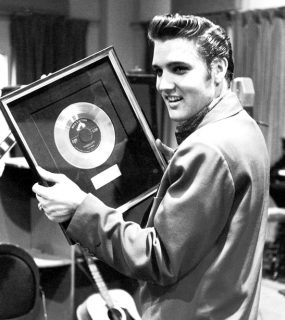Alicia Keys x Kaskade “In Common”
Kaskade has kicked off festival season with a bevy of new productions. His last offering was a new original titled “Jorts FTW” — a strange, albeit exciting festival piece designed with wild crowds in mind. The track was a step outside of his usual brand of emotive house music, yet well-received nonetheless by fans for its intensity.
His newest track brings us back to his roots in the underground as he converts Alicia Keys’ single “In Common” into a sultry, garage-tinged house number. Subtle synth accents paired with mellow kicks provide a smooth background for Keys’ verses to flow effortlessly over. Ultimately, Kaskade has created the perfect canvas to adapt “In Common,” forming a new piece completely his own that almost sounds as if it could have been the original version.
Read the rest of this article at Dancing Astronaut
oshi dahlia
Oshi has just released his latest original tune, this time in the form of a groovy and highly experimental trap piece titled “Dahlia.” Featuring a consistent bass line and haunting vocal cuts, the track reveals a new and more freethinking side to Oshi’s already stacked roster of material.
The track begins with scattered, distant percussion hits and a funky bass line. A minimal and crunchy trap rhythm emerges from the layers, where distorted vocal chops take over the spotlight. The percussion arrangement overlaps and replaces itself several times throughout the length of the track, allowing the underlying melodies and loops to be fully explored.
Read the rest of this article at Youredm
King Creosote – You Just Want
Kenny Anderson is a songwriter from St. Andrews, Scotland who spent years in a bluegrass band prior to launching his solo career as King Creosote back in 1995. His new LP Astronaut Meets Appleman follows 2014’s From Scotland With Love, as well as 2011’s Diamond Mine, his Mercury Prize-nominated collaboration with John Hopkins. Lead single “You Just Want” is expansive, meditative folk — simmering in the moonlight over seven minutes without ever crossing over into a boil. Anderson is less concerned with shaping the music towards a typical song structure than simply setting up a dynamic space, one that crests and buckles in gradual waves alongside roving violins, harp, and vocal harmonies.
Read the rest of this article at Stereogum
Jamila Woods – LSD feat. Chance The Rapper
Jamila Woods has her own project in the pipeline! She’s managed to vacuum shine like a blackhole in guest spots on the Social Experiment’s “Sunday Candy,” Macklemore’s “White Privilege II,” Kweku Collins’ “Ego Killed The Romance” and one of Chance The Rapper’s “Blessings” among others, but we finally get to hear her at the helm on the 13-track project,HEAVN. We’ve already heard the title track, and today we get the Chance-assisted “LSD.”
Woods’ poetic pen and voice are in their normal glowing, soulful form. She extends a tender invite to “get on the highway” to escape hard times, but not through the temporary, ever-elusive high of drugs and vices as the title suggests. Rather through the strength of love, both of others and the self, and the community it fosters, she strengthens her resolve and in turn does the same for those she cares about. Chano comes in with more unbridled ebullience, hoping for a better future for his daughter and extending Wood’s uplifting infectiousness.
Read the rest of this article at Stereogum
Boxedin – Jist
Oli Bayston began his career in the short-lived Manchester rock band Keith. He followed the project’s split by writing and producing for several UK singers such as George Fitzgerald and Lianne La Havas, before subsequently beginning his own dance-pop project Boxed In. The London-based quartet released their eponymous debut early last year, and they’re now gearing up for their sophomore LP Melt. Lead single “Jist” is a punchy electronic track featuring looping vocals, a swelling undercurrent of rumbling synths, and a shiny keyboard melody. “Climbing to the top now, on a search for cleaner air,” Bayston proclaims, as the background suggests he’s preaching from the DJ booth of a Sierra Club after dark. Where some electronic tracks skitter, “Jist” smoothly saunters down a treadmill running at a casual post-workout half-speed cool down.
Read the rest of this article at Stereogum
News
Inside The Playlist Factory

When he’s choosing your music for you, Carl Chery, 37, is in Culver City, California, sitting at his desk in an office with no signage, trying to decide whether Drake and Future’s “Jumpman” (jumpman, jumpman, jumpman) has jumped the shark. Or sometimes he’s at home in his one-bedroom apartment on the border of West Hollywood and Beverly Hills, walking around in his living room with new Gucci Mane blasting from a Beats Pill. Or at the gym going for a morning run on the treadmill, thinking about your gym and your treadmill, listening through headphones for changes in tempo and tone: Will this song push you through the pain? Is that one too long on the buildup?
“It’s hard to describe because it’s more of a feeling or instinct,” says Chery of his process. He’s from Queens, New York, which, despite his residence in Los Angeles for the past four years, is obvious when you hear him talk. “It kind of just happens. You sit there and you start moving and just do it.”
Read the rest of the story at BuzzFeed
Solving the Mystery of ‘Heartbreak Hotel’

The story has been repeated thousands of times, with minor variations, in magazines, books, blogs and documentaries. In some versions, the heartbroken man shoots himself; in others, he leaps to his death from a hotel window. There are occasional references to a failed romance and to the destruction of all traces of identification before the fatal act. There’s always a one-line suicide note: “I walk a lonely street.”
But there’s never a name. For 60 years, the true identity of the man whose death inspired “Heartbreak Hotel” has remained a mystery. Florida songwriters Tommy Durden and Mae Boren Axton always claimed the creative spark for Elvis Presley‘s first-ever Number One hit was a 1955 newspaper story about an anonymous man’s suicide and his cryptic note about that “lonely street.” (The paper cited is usually The Miami Herald.) And yet, no one has ever turned up the article, or even provided much clarifying detail.
Read the rest of the story at RollingStone
The Surprising Musical Preferences of an Amazon Tribe

Play two notes that are three steps away on a musical scale, like C and the F-sharp above it, and you have what’s called the Devil’s Interval. It has long been used to symbolize tension, sinister forces, and outright evil, from Wagner’s Gotterdammerung to the music of Black Sabbath to the Simpsons theme song. It’s a great example of dissonance—a sound that seems unpleasant, tense, and jarring. By contrast, consonant notes, like the octave or perfect fifth (C and the G above it) sound pleasant and agreeable, like the notes belong together.
To Western ears, the difference between consonance and dissonance is stark, and we greatly prefer the former to the latter. Since the ancient Greeks, scholars have wondered why. Many musicologists and composers have assumed that the preference is cultural: Western listeners learn to love consonant sounds because of how they are used in Western music.
Read the rest of the story at The Atlantic




